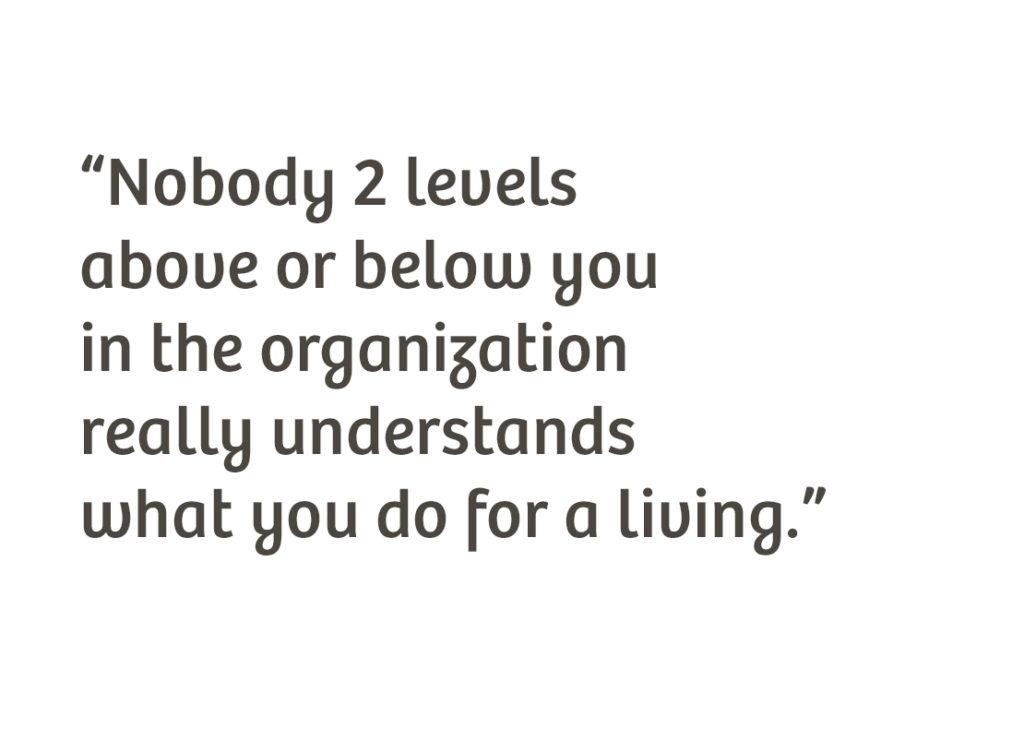What It Is:
The “Rule of the Second Floor” attributed to Tim Ottinger highlights the idea that someone who is two organizational levels above or below you may not have a clear understanding of your role or work. This rule underscores the importance of effective communication within an organization.
This is associated with an “us versus them” mentality in the workplace.
How to Use It:
Using Rule of the Second Floor in Agile Coaching:
- Communication Strategies:
- Emphasize the importance of clear and effective communication within the team. Ensure that team members are articulating their work, achievements, and challenges in a way that is understandable to stakeholders at different levels.
- Stakeholder Engagement:
- Encourage team members to actively engage with stakeholders, especially those two levels above or below, to provide regular updates on project progress, challenges, and contributions. This helps build a shared understanding of the team’s work.
- Visualizations and Reporting:
- Use visualizations and concise reporting methods that can be easily understood by stakeholders at various levels. Dashboards, burn-up charts, and other visual aids can be effective in conveying complex information.
- Regular Status Reviews:
- Facilitate regular status reviews or check-ins with stakeholders at different organizational levels. This provides an opportunity for the team to share their progress and discuss any concerns directly with those who may not be closely involved in day-to-day activities.
- Documentation and Documentation Review:
- Encourage teams to maintain clear and up-to-date documentation. Periodically review this documentation with stakeholders to ensure that it aligns with their understanding and expectations.
Remember to stay updated with Tim Ottinger’s recent activities and publications, as new content may provide further insights into the Rule of the Second Floor and related topics.
See Also:
References:
Resources on Rule of the Second Floor and Tim Ottinger:
- Tim Ottinger’s Blog:
- Tim Ottinger may share insights and discussions about the Rule of the Second Floor on his blog. Check his blog for articles and posts related to this concept.
- Podcasts and Interviews:
- Originally stated in ep.15 of Agile for Humans podcast , you might search for other podcasts or interviews featuring Tim Ottinger where he may discuss the Rule of the Second Floor. Tim might share practical examples and experiences related to communication within organizations.
- Agile Conferences and Events:
- Look for presentations or workshops by Tim Ottinger at Agile conferences or events. These sessions might cover the Rule of the Second Floor and its implications for Agile teams.
- Social Media and Forums:
- Engage with Tim Ottinger on social media platforms or Agile forums. Tim may share insights, respond to queries, or participate in discussions related to Agile practices, including his Rule of the Second Floor.
Visit the Agile Coach’s Toolkit for more definitions, models, theorems and stuff.

